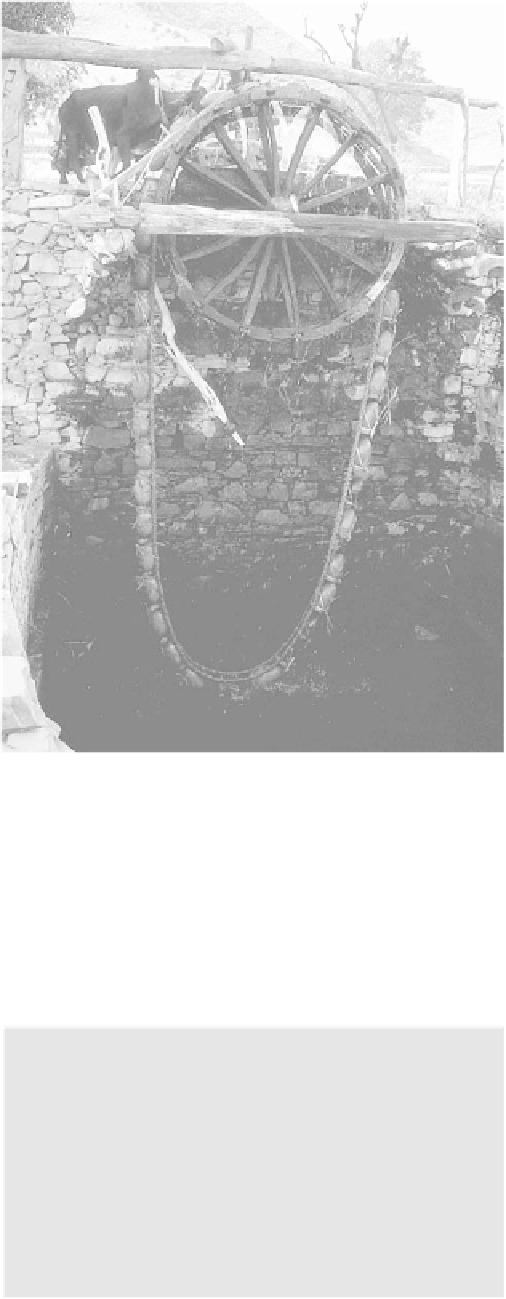Geography Reference
In-Depth Information
The caste system was well entrenched in this era.
Caste taboos meant that leather-workers, butchers, and
scavengers were confined to mud quarters beyond the
city wall. Moreover, they were compelled to walk on only
the left side of the road.
Southern India was not entirely isolated from activities
in the north. Cultural influences diffused from the north-
west southward via the western highlands. Many Sanskrit
words were incorporated into Dravidian languages. Contact
with the Mauryas brought new ideas of statehood. Brahmin
families were instrumental in the spread of Hinduism.
T Translation of sacred texts and orthodox practices strength-
ened the hierarchical structuring of society . Oppression of
low castes and untouchables was frequently intense.
INV ASIONS AND EMPIRES
Eighty years after the death of Muhammad in 632, an
Arab empire extended from the Pyrenees in Spain to the
Indus valley . The Arabs initiated their territorial gains in
India when they established themselves in Sind at the
mouth of the Indus in 712. Gujarati rulers tried to fend
off conquest, in part by welcoming Zoroastrians who fled
Persia and formed India' s Parsi community , now concen-
trated in Mumbai (Bombay). Parsis, for whom fire is the
essence of purity , would later make significant contribu-
tions in finance, trade, industry , and the arts. It is thought
that the Persian water wheel was introduced at this
time (Figure 6-9). The Arabs also introduced paper and
gunpowder. By 871, they had established independent
dynasties in the Sind and the Punjab and in 1000, a holo-
caust began.
Mahmud (971-1030) of Ghazni (in Afghanistan),
son of a T Turkish slave, plundered India with 17 invasions
over the next quarter century . Called “The Sword of
Islam,” Mahmud and his armies swarmed through the
Khyber Pass during the dry monsoon. After devastating
everything in their path, they sped back to Afghanistan
before the wet monsoon could make the Punjab rivers
impossible to ford. In 1023, they sacked the temple at
Sarnath and slaughtered 50,000 Hindus. Interestingly ,
Mahmud was never interested in acquiring territory . For
him, India was merely a treasure trove.
Why were these invasions so successful? First, frag-
mentation in terms of social and political divisions pre-
cluded any united front against them. The Cholas were far
from the fray . The Rajputs with their independent group
structure were never able to coordinate their efforts, de-
spite their strong fighting abilities. The caste system was
another hindrance to correlative action. In contrast, any-
one could join Muslim armies. With ability and loyalty ,
Figure 6-9
This animal-powered Persian water wheel in Rajasthan, India, is
evidence of Persian influences.
Photograph courtesy of B. A. Weightman.
even slaves could rise to top positions. Second, Indian
armies fought with relatively cumbersome elephants.
Muslim horse-archers could easily outrun them. With a
rapid charge, they would suddenly swerve their horses
sideways, release a hail of arrows, and race away .
Did you know that the game of chess was probably
derived from elephant warfare?
Elephants and Chess
Around 500 BC, the elephant arrived on the Indian
battlefield. Elephant warfare strategy is faithfully
represented in the game of chess, probably invented



















Search WWH ::

Custom Search